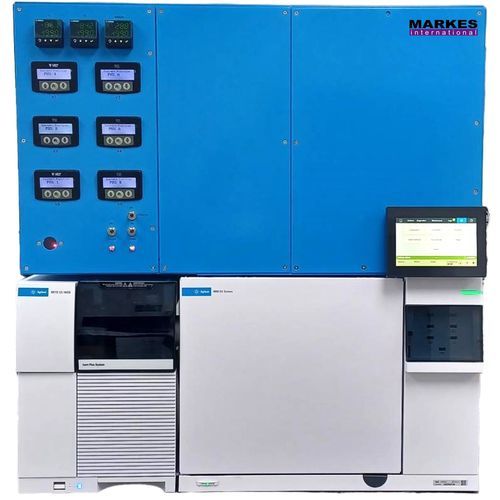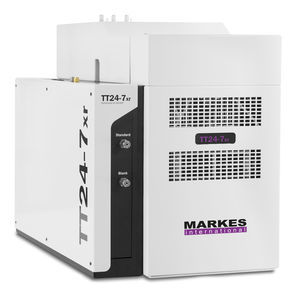
- Laboratory
- Sample management
- Gas concentrator
- Markes International
Gas concentrator Medusalaboratory
Add to favorites
Compare this product
Characteristics
- Applications
- gas, laboratory
Description
The Medusa preconcentration system is well-established as a high-performing system for the precise background monitoring of ozone-depleting substances (ODS) and greenhouse gases (GHGs).
Medusa is the only instrument that has been demonstrated to measure NF3 in ambient air samples at background levels (2–4 ppt), and is a trusted instrument used globally by the AGAGE network and by NOAA for over 45 years.
Designed by the AGAGE laboratory at the Scripps Institute of Oceanography, and built by Markes, Medusa traps up to 2 L of air, enabling confident measurement of sub-ppt compound concentrations. Its advanced management of interferents, including removal of water with Nafion membrane dryers, ensures reliable data collection. With a linear response over a wide range of sample concentrations and ‘sandwich calibration’ for ambient air samples, Medusa provides accurate, consistent measurements critical for atmospheric research.
Market-leading advantages
High-performance – Medusa is the only instrument demonstrated to measure NF3 in ambient air samples at background levels (2–4 ppt).
Confident reporting – Management of interferents (H2O and CO2) is standard, allowing high sensitivity for all controlled ODS and GHGs.
Reliable – Water and CO2 management help to enhance analytical repeatability, avoid analyte suppression, and increase instrument uptime.
Flexible – Medusa is suitable for laboratory or field measurements.
Convenient in the field – Cryogen-free cooling is economical, and makes Medusa suitable for field measurements, as well as allowing continuous running for laboratories and field measurement stations.
Related Searches
- Laboratory automation platform
- Liquid handling laboratory automation system
- Sample concentrator evaporator
- Laboratory concentrator evaporator
- Benchtop laboratory automation platform
- High-throughput laboratory automation system
- Robotic laboratory automation system
- Modular laboratory automation system
- Gas concentrator
*Prices are pre-tax. They exclude delivery charges and customs duties and do not include additional charges for installation or activation options. Prices are indicative only and may vary by country, with changes to the cost of raw materials and exchange rates.






